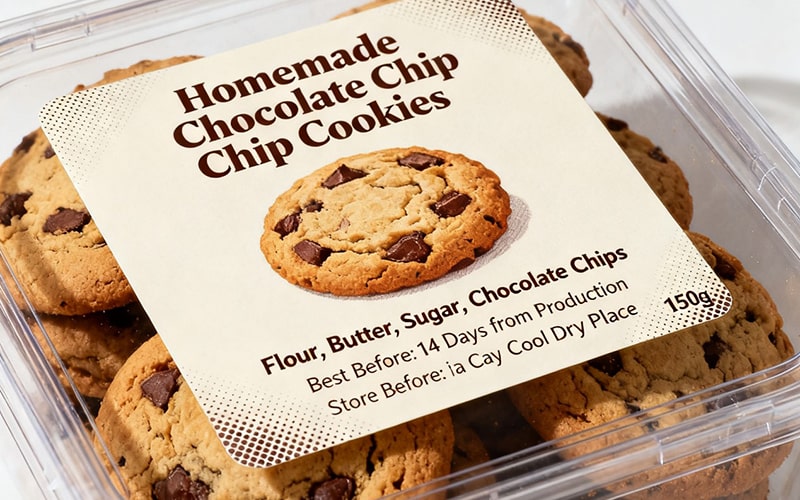Flexo Printing Explained for Self Adhesive Label Films
Flexo printing uses flexible plates to create high...
MoreThe application of self-adhesive label materials spans numerous industries, including logistics, retail, food and beverage, pharmaceuticals, and manufacturing. These materials are engineered for versatility, enabling uses such as product identification, barcoding, branding, warning labels, and tamper-evident seals. In sectors like e-commerce and supply chain management, self-adhesive labels facilitate efficient tracking and handling of packages, while in retail, they enhance product appeal with high-quality graphics. The adaptability of these materials to various surfaces—from cardboard and plastic to glass and metal—makes them indispensable for modern business operations, supporting everything from inventory management to consumer engagement.
According to industry reports from sources like MarketsandMarkets and Smithers, the global pressure-sensitive adhesive (PSA) label market, which includes self-adhesive labels, was valued at approximately $105 billion in 2022 and is projected to grow at a compound annual growth rate (CAGR) of 4-5% through 2027. This growth is driven by increasing demand in emerging economies, e-commerce expansion, and stringent labeling regulations in sectors like healthcare and food safety. For instance, in the pharmaceutical industry, self-adhesive labels must comply with standards such as the FDA's guidelines in the U.S. or the EU's Falsified Medicines Directive, which require specific features like serialization and tamper evidence. Data from Avery Dennison, a leading material supplier, indicates that their self-adhesive solutions can achieve application speeds of up to 1,000 labels per minute in automated systems, reducing operational costs by up to 20% in high-volume environments. Additionally, sustainability trends are shaping material choices; a 2021 Smithers study found that over 60% of brands are prioritizing recyclable or biodegradable label facestocks and adhesives to meet consumer and regulatory demands for eco-friendly packaging.
Self-adhesive label materials consist of multiple layers: a facestock (the printable surface), an adhesive, a release liner (backing paper), and sometimes a topcoat for protection. Common facestock materials include paper (e.g., semi-gloss, matte, or thermal paper) and films (e.g., polypropylene, polyethylene, or polyester), each selected based on durability and environmental resistance. Adhesives are categorized by their properties, such as permanent, removable, or freezer-grade options, with water-based, solvent-based, and hot-melt formulations catering to specific needs. For example, in food packaging, direct contact labels often use adhesives approved by organizations like the NSF International to ensure safety. Performance data from companies like UPM Raflatac shows that film-based labels can withstand temperatures from -40°C to 150°C, making them suitable for frozen food or automotive applications. Moreover, search volume data from Google Trends and keyword tools like Ahrefs highlights high interest in terms such as "waterproof labels" and "custom stickers," with monthly searches exceeding 100,000 globally, reflecting the need for durable, personalized solutions in marketing and industrial settings.
In practice, self-adhesive labels are applied using manual, semi-automatic, or automatic methods, with equipment from manufacturers like Zebra Technologies or SATO America ensuring precision and efficiency. For instance, in logistics, barcode labels printed on thermal-transfer materials achieve scan rates of over 99%, as per GS1 standards, minimizing errors in shipping and inventory. Case studies from retailers like Amazon demonstrate that optimized label materials can reduce supply chain waste by 15% through improved adhesion and readability. Furthermore, digital printing advancements, such as HP Indigo's electrophotographic technology, enable short runs with vibrant colors and variable data, catering to the rise of on-demand labeling. As sustainability gains prominence, innovations like linerless labels—which eliminate waste—are gaining traction; a 2023 report by Finat noted that linerless adoption could cut material usage by 40% in some applications, aligning with circular economy goals. Overall, the evolution of self-adhesive materials continues to address industry-specific challenges while supporting global trends in automation, customization, and environmental responsibility.
Select the most popular foreign trade service products to meet your diverse needs
Learn more about the dynamics and professional knowledge of the foreign trade industry

Flexo printing uses flexible plates to create high...
More
BOPP Film, or Biaxially Oriented Polypropylene Fil...
More

In the packaging industry, two of the most popular...
More
If you’re new to garment printing, using DTF film ...
More
Sports are all about unity—and nothing fuels team ...
MoreSelect the most popular foreign trade service products to meet your diverse needs
Explore more content related to foreign trade services

Tel: +86 17706217416
Add: Building L2A, No. 520, Lane 1588, Zhuguang Road, Hongqiao World Center, Qingpu District, Shanghai, China
User Comments
Service Experience Sharing from Real Customers
Michael Rodriguez
Warehouse ManagerThese self-adhesive label materials have revolutionized our inventory system. The permanent adhesive holds strong even in our humid warehouse environment, and the print quality remains crisp for months. Excellent durability and reliability!
Sarah Chen
Retail Store OwnerAs a small business owner, I rely on quality labeling for product presentation. These self-adhesive materials provide perfect adhesion without leaving residue. The premium finish gives our products a professional look that customers notice and appreciate.
David Thompson
Shipping CoordinatorThe weather-resistant properties of these label materials have significantly reduced our shipping errors. They maintain integrity through various handling conditions and temperature changes. Only reason for 4 stars is I wish they were slightly more affordable in bulk.
Jennifer Walsh
Office AdministratorPerfect for our filing system reorganization project! The self-adhesive backing applies smoothly without bubbling, and the matte finish allows for easy writing when needed. These labels have stood up to frequent handling without peeling or fading.